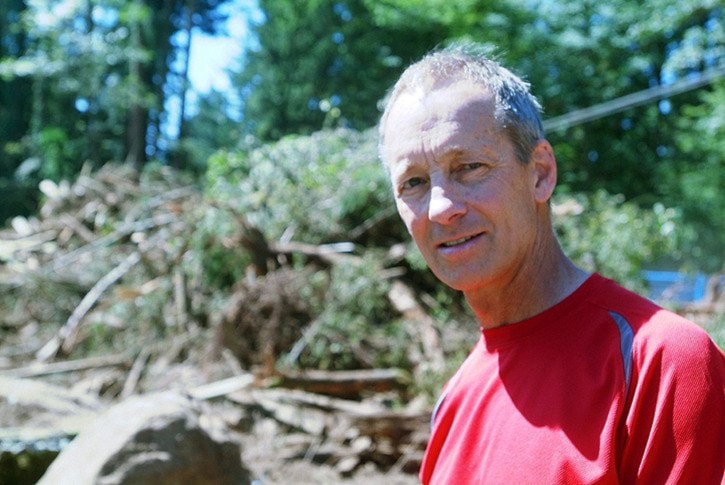The number of trees being cut down in Surrey dropped a few years ago and has remained stable since then.
However, a community leader is pointing to a planning flaw that he says is costing the city countless trees unnecessarily.
In the first six months of this year, the city granted permits to cut down 3,000 trees. It’s about on par with the rate of tree lost in all of last year, which was 5,796.
Both figures are down substantially from the yearly average between 2001 and 2008, when an average of 9,100 trees were cut down annually.
Planners have attributed the drop to a downturn in the economy, while Mayor Dianne Watts has said it’s a sign of an effective Tree Preservation Bylaw.
However, Panorama Ridge resident Bob Campbell says there’s still a major flaw in the planning process, one that allows builders to “cut twice and build once.”
Campbell, also a member of the city’s Environmental Sustainability Advisory Committee (ESAC), says Surrey is in the practice of allowing tree cuts based on a purchaser’s idea of building placement as soon as he’s awarded approval for subdivision of a property.
The city allows him to take down trees on that best guess as to the location of the eventual utilities, lot lines, driveways and home footprints. Trees are cut down to accommodate and the property is sold.
But then the new owner draws up firm plans on where the utilities, roadways and homes will actually go, often in entirely different areas, Campbell says.
Once again, the land undergoes a massive clearing.
Campbell says no tree cuts should be allowed until a piece of land is sold to the final builder.
Surrey does put restrictive covenants on the trees remaining after the first cut, but Campbell says the city doesn’t enforce them.
“Other than allowing the developer to increase the value of the lots, there is no logical reason why the trees should be cut the first time,” Campbell says.
ESAC chair Coun. Bruce Hayne said he looked into the issue some time back, and city planners and engineers found it happens so infrequently, it hasn’t become a concern.
Asked if there was a way of changing the way the city does business, so no trees are cut unnecessarily, Hayne said he would look into it.
Which trees count?
Permits aren’t required for smaller trees.
The trees the city issued permits to cut down last year were at least 30 centimetres in diameter at breast height.
Or they were one of a number of protected species, such as Arbutus, Garry Oak, Pacific Dogwood, Pacific Yew, Coast Redwood, Dawn Redwood, Giant Redwood, Maidenchair or Monkey Puzzle tree.
Trees such as cottonwood or alder are often referred by council and staff as “scrub” trees. They either don’t have a long life cycle or don’t survive development well.
However, if they are 30 centimeters in diameter at breast height, they require a city permit.
City-initiated cuts don’t require permits, and therefore, are not part of the count.
